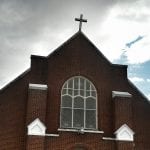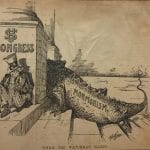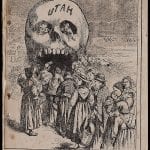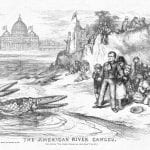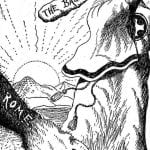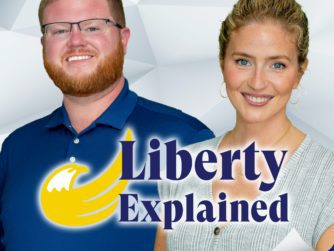Religious Freedom in America
By Hodey Johns
The very first part of this very first Amendment states: “Congress shall make no law respecting an establishment of religion, or prohibiting the free exercise thereof.” Of all of the rights deemed untouchable by government within the Bill of Rights, this was deemed the most important right of all, even before speech and press. But in spite of its founding, the United States did not become a place of freedom for believers until recently. This unparalleled strength was not handed to us, it came through bloodshed, martyrdom, and massacres.
In this article, I will examine the journey of several religions within the USA, complete with some of their darkest moments. I offer up these historical situations not to criticize this country, but to praise it. The pioneers of this nation navigated uncharted waters, both literally and figuratively, especially in the religious sense. They did not do so perfectly, but it was during a time in world history where believing in a non-state-sanctioned faith meant certain death. Americans made mountains of life from these valleys of death.

Contrary to the coloring books you might get in Elementary School, there is not one single belief system that was held by the natives who lived here. There were thousands. I hate grouping them all together as they each are worthy of study, but I put them together for a noble reason. When one was put on trial, members of the various indigenous faiths banded together to fight against oppression.
In spite of Constitutional protection, the collection of Native American faiths was almost immediately illegalized. How could this happen? Simply, because they were not considered Americans. And it was assumed that those who became official citizens would implicitly give up their beliefs. The punishment for believing in this religion? Death. More accurately, since practicing an illegal faith nullified citizenship, government protections would not apply.
The result? Countless massacres. Literally countless, since killing them neither merited legal reporting nor demands for explanation. On the record, there are well over one hundred incidents of round-’em-up-shoot-’em-dead mass murders, almost all of which include women and children and number in the double digits.
But initially, even with this bloodshed, it wasn’t enough to just illegalize the religion inside of the borders. In 1883, the Department of the Interior successfully argued that the persecution of the faithful wasn’t enough. Citing a few prayers in which the believers asked that white people leave the land, they were deemed a foreign threat and actively hunted. Even in their own reservation, practicing any native faith was met with state sanctioned violence.
On the Hopi Reservation, since wearing long hair was a sign of thankfulness to the divine for falling rain, it was mandated that their warriors have haircuts. On all reservations, ceremonial face painting was banned on pain of death. The following is an actual quote from the Commissioner of Indian Affairs:
“The use of this paint leads to many disease of the eyes among those Indians who paint. Persons who have given considerable thought and investigation to the subject are satisfied that this custom causes the majority of cases of blindness among the Indians of the United States.”
This type of misinformation was met with deadly force supported by the public at large, usually resulting in between twenty and two hundred natives being tied up and executed. In December of 1890, it all came to a head. On the heels of two large massacres already that month, the Lakota natives, a mixture of Miniconjou, Hunkpapa, Paiute, and Sioux, participated in the Ghost Dance. The dance was performed around a campfire with the hopes of making the whites leave them alone. The result was the opposite.
On December 29th, 1890, the United States Army rounded up around 250 natives of Lakota, mostly women and children, slaughtered them, and buried them in mass. Proudly, the attackers took a picture of the aftermath, which I have included with this article.

This picture should break your heart. This is what it did for thousands of United States citizens. While it was meant to be a trophy for an accomplishment, colonial descendants saw, many for the first time, what killing people for their faith really looked like. The army tried to call it the Battle of Wounded Knee. The people that paid their salaries correctly called it the Wounded Knee Massacre.
 While not enamored with the natives, the people still demanded a stop to these actions. By 1892, while Native American religions were still against the law, it was no longer lawful to murder their ranks. And while the practitioners could be jailed, that required a trial. Trials are more expensive than bullets, and so many were finally free to practice their faiths without must reprisal for the first time. The Wounded Knee Massacre was horrifying. But it marked the beginning of an end. After that day, only one other massacre ever occurred in the USA and even that massacre was minimal in casualties and completely unsanctioned.
While not enamored with the natives, the people still demanded a stop to these actions. By 1892, while Native American religions were still against the law, it was no longer lawful to murder their ranks. And while the practitioners could be jailed, that required a trial. Trials are more expensive than bullets, and so many were finally free to practice their faiths without must reprisal for the first time. The Wounded Knee Massacre was horrifying. But it marked the beginning of an end. After that day, only one other massacre ever occurred in the USA and even that massacre was minimal in casualties and completely unsanctioned.
Those who are on the inside of the fight to legalize recreational drugs know of the contributions the native faiths have had in this fight. Peyote, a spineless cactus used in religious ceremonies by several different tribes, was given an exemption 1994. Naturally, it wasn’t long until marijuana advocates used this amendment in court to represent other exemptions. Drug legalization, if it happens, on the rare occasions it happens, owes its origin to the fight of the practicing natives.
In spite of the positive momentum, it wasn’t until 1978 that these religions become officially legal. Prior to that, conviction meant up to 30 years in prison. It took over 150 years of peace between the two sides to put an end to the bloodshed. There is work to do. Thankfully, this work continues to get done and indications are almost entirely positive.

The right to believe also includes the right to not believe… doesn’t it? It should. But in practice, it did not until recently. Thomas Paine, a founding father, was a noted atheist, but had to keep this a secret from the public. Most of his public speeches and writings mention God, masking his true beliefs for fear of reprisal.
I am already sure several atheists are going to be upset with me including them in this study. But I mean no harm or insult. Even if they do not consider themselves a faith with any distinguishable practices, their struggles and successes have contributed to the framework of religious freedom in this country. And it is in that dimension that I observe their contribution to our both current state and future.
Specifically, one legal case represented a major win for atheists, but it also furthered religious freedom and weakened judicial prejudice. While many have not heard of The State of Tennessee versus John Thomas Scopes, any English Major has likely been required to read “Inherit the Wind,” the play by Jerome Lawrence and Robert E. Lee. While the narrative was fictionalized, the sensationalization of the event is certainly warranted.
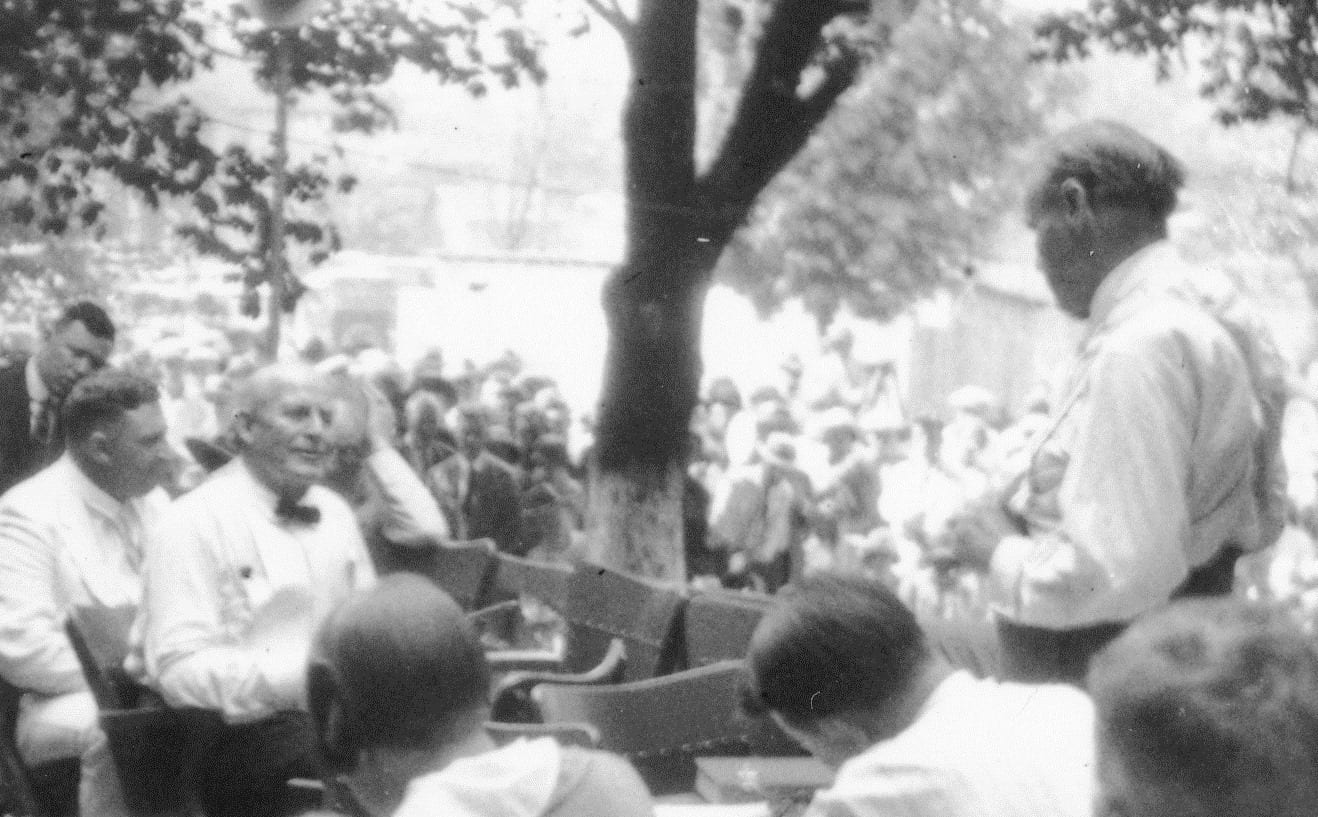
Mr. Scopes never spoke at his own trial, as the trial itself outgrew him pretty quickly. His crime? Teaching Darwin’s Origin of Species on top of the mandated reading of “Genesis” (from The Bible). Such teachings were directly opposed to the curriculum. The two biggest names in the field of lawyers picked up opposite sides of the case and the nation was treated to a showdown between Clarence Darrow for the defense and William Jennings Bryan for the prosecution.
Bryan had the popular position. His position was also enviable because Scopes himself made no effort to refute the allegations against him. In essence, he confessed his guilt immediately, but he took issue with a sentence. Yet Darrow was cunning. After losing public confidence, he called Bryan, the prosecutor, to the stand. Bryan, perhaps out of either duty or hubris, accepted. A picture of this exact moment is available with this article. Citing the heat in the courtroom, you might notice that this trial took place outdoors. However, the more likely explanation is that neither lawyer was opposed to the spotlight. But I digress.
On the stand, Darrow managed to get Bryan to admit that, since the sun was not around, who could say how long the “days” were in which God created the universe? Bryan admitted it perhaps could have been a few minutes extra and Darrow capitalized on the mistake. If a few extra minutes could have slipped in, why not a few extra eons?
 The biggest success was that while the court found Scopes guilty, the jury nullified his sentence. The judge still fined him $100, but it set a precedent. Now, those with alternative views in regards to creation and the origin of humanity were free to teach these alternatives without risking time in jail. And going through a massive trial for a small fine was such a waste that the ruling, in essence, legalized these teachings.
The biggest success was that while the court found Scopes guilty, the jury nullified his sentence. The judge still fined him $100, but it set a precedent. Now, those with alternative views in regards to creation and the origin of humanity were free to teach these alternatives without risking time in jail. And going through a massive trial for a small fine was such a waste that the ruling, in essence, legalized these teachings.
The victories keep coming. Atheists, like many other religions in the USA, still have a ways to go. The good news is that this progress has not stopped. In 1994, Supreme Court Justice David Souter ruled that “government should not prefer one religion to another, or religion to irreligion.” While not enforced, seven states still have laws prohibiting atheists from holding public office or being used as a witness. It is only a matter of time, it seems, before these trivial laws and this black stain on our history will be erased forever.
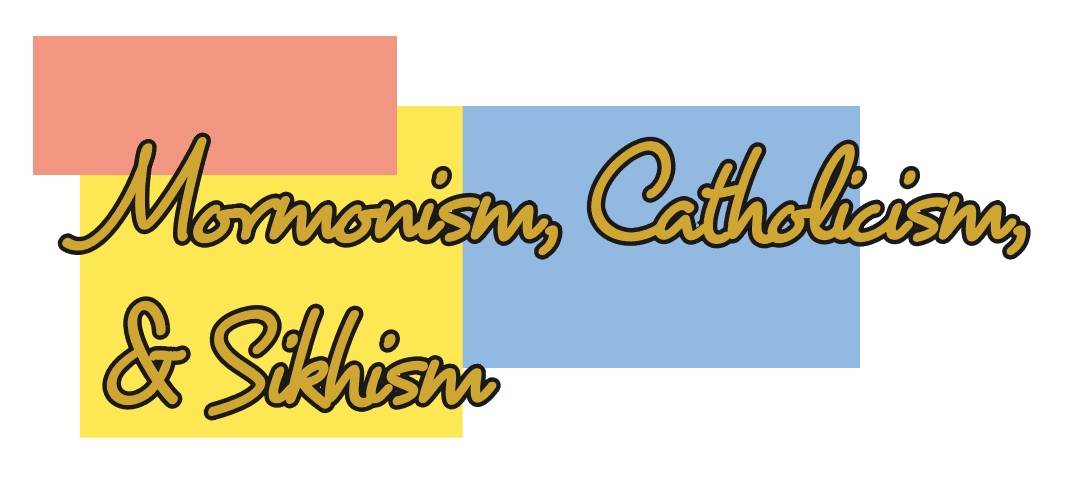
Even Christian denominations were not friendly with one another for a majority of our country’s existence. Aside from Roger Williams and his small Rhode Island, all of the other early American colonies were established and divided based on specific religious persuasion. And while all of these were offshoots of Christianity, that did not prevent outright hostilities and violence between these factions. Scholars looking into the numbers of the Constitutional Convention find it evident that even the founders were aware that the fledgling nation was not opposed so much about the size and scope of government as they were opposed to religious unity.
The reader has likely covered these quarrels in a history class. Thanks in large part to the leadership and persuasion of the founding fathers, an unsteady truce took place in the aftermath of the American Revolutionary War. But there were other denominations still to come that were not lucky enough to have a Thomas Jefferson, a James Madison, or an Alexander Hamilton speak on their behalf and make peace with the rest.
Mormons were unfortunate to have the ultra-controversial Joseph Smith as their founder and eventual martyr. While details of his death remain clouded, the Illinois Governor Thomas Ford did not mince words when asked about protecting him or any other Mormons. He remarked that they “…expect more protection from the laws than the laws are able to furnish in the face of popular excitement.” In short, since enough people want them dead, it’s open season.
Unlike some religious minorities before this time, where killing a follower of the faith was merely permissible, Missouri actually issued Executive Order 44, demanding the wholesale murder of Mormon practitioners “on sight.” This fell out of favor, of course, but was not rescinded actually until 1976, not coincidentally, the same year the Native Americans saw their faiths become legalized.
It was not until settlers taking offshoots along the Oregon trail were forced to do business with the Mormons that the faith regained legitimacy. The passengers found that the hospitality from this group contradicted the media’s portrayal of barbarism.
I have submitted some anti-Mormon political cartoons from the time in the hopes that you will observe them and see similarities to other marginalized persons today. It might have made for a good laugh back then, but it resulted in a great deal of agony. Mormonism has recovered well, becoming the fastest growing religion in the world in several recent years, so it is with pride that we can anticipate closing this dark chapter.
Catholics didn’t fair too much better. While they dodged much of the murder of some other religions in the USA, they remained largely discriminated against for longer periods of time. While the Mormons fled persecution to the west, the Catholic movement had a different plan. They began to cohabitate and socialize with their enemies. Most Protestant schools received funding for their schools from taxpayers. This method of finance was declined to Catholic parochial schools. Instead of throwing in the towel, Catholics raised the money themselves.
The anti-black movement, having been instrumental in overthrowing Joseph Smith’s faction due to his belief that no man, including black men, should be held in slavery, turned its wrath on Catholicism soon after, who actively allowed black men in their ranks. I have included two cartoons from the era. One shows not only propaganda against Catholics, but black men within their ranks in. The other shows the grasp of Rome as an ape arm. By the end of the 1920s, these objectors called themselves the Klu Klux Klan and were louder than ever.
The Catholics matched that volume. In 1925, they boldly built the Church of the Little Flower in one of the largest Protestant areas of the United States; Royal Oak, Michigan. Within two weeks, the KKK had burned the cross on their front lawn. The Church erected a new cross. And the KKK burned that down. The congregation kept replacing that cross until 1936 when the entire Church was burned down. Astonishingly, the Church was rebuilt, with each piece used in the construction being made fireproof. Having weathered the storm, the Church topped off their building with a “cross they could not burn.” In defeat, the KKK stopped after failing to be able to burn either the Church or the cross.
Having lived side-by-side with Catholics for decades, the country finally welcomed John F. Kennedy as the first Catholic president in 1960. Unable to make the stigma about their beliefs stick, religious freedom won out over racism. There have been hiccups, to be sure. The Affordable Care Act directly attacked Catholic practices, but the ability to unify with other denominations has resulted in even these relatively new persecutions to be largely exempted.

While not a traditionally western religion, Sikhism is the ninth largest religion in the world. The adherents are required to carry a small dagger called a Kirpan with them, due to religious remembrance. Though an extremely small minority here in the United States, they led a significant boycott against all air travel for forcing them to violate their faith while on a flight.
As a testament to their commitment, in 2013 the TSA exempted this religious artifact from the standard ban. This decision has led to multiple liberty-minded challenges, including the right to defend yourself while travelling and the right to wear religious garments privately through checkpoints. Classically wearing a traditional turban, Sikhs are under a great deal of scrutiny, especially during air travel. But by reaching out to other religious and political minorities who wear or carry items of intimate and religious nature, they gained victory for more than just themselves.

I can’t possibly cover the contributions of all religions in one article. I regret not including Shintoism and Judaism with their struggles to be recognized and how their successes have helped us all. Protestants are not the villains here and they find themselves on the forefront of the revolution today in respect to Church property and taking care of the homeless on their terms. Author Irving Dilliard said, “Jehovah’s Witnesses have done more to help preserve our freedoms than any other religious group.” Please accept my regrets that I can’t fit in more. As I finish this piece, I feel akin to a man who has already overeaten at a buffet and then sees something else he desperately wants to consume. Even the examples I mentioned here deserve further exploration, but an overview will have to suffice
The United States is among the most religiously tolerant countries on earth. We did not get here for free. And while there is much work to be done (we regularly rank outside of the top 20 most tolerant countries) in the area of religious freedom, we are the ones to look up to.
Much of the story of America is a story about freedom slowly eroding in the courts and by public demand. Fortunately for us, religion has been a single, but major exception. This is not just food for thought or fun facts. By using religious freedom, other freedoms are taking shape in the form of the drug war weakening, privacy protections increasing, school choice strengthening, family rights expanding, and more.
In a non-religious context, these fights are not doing particularly well. Yet when religion is involved, Americans find themselves winning fights for those of every religious and non-religious persuasion. Perhaps unaware, when we accept those of different faiths and learn more about them, we do substantial damage to tyranny at large. The most oppressive governments in the history of the planet have either mandated only a single religion or none at all. Religious liberty may never set us completely free, but it keeps even the worst of tyrants in check.

